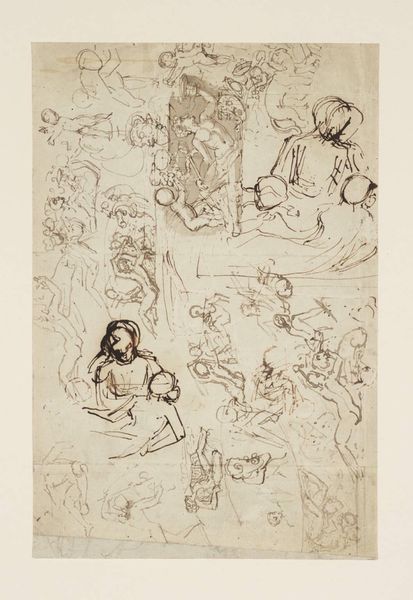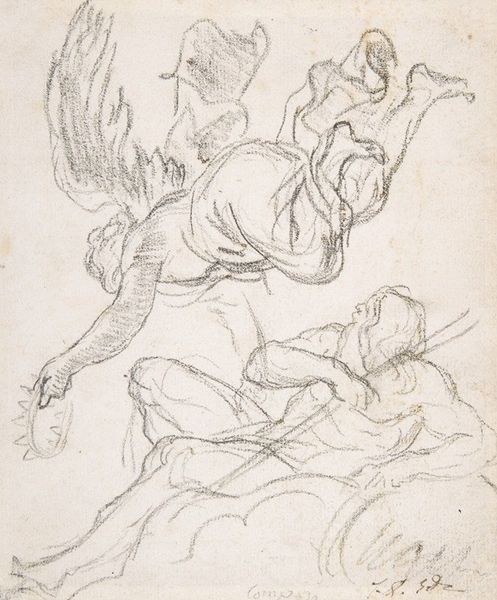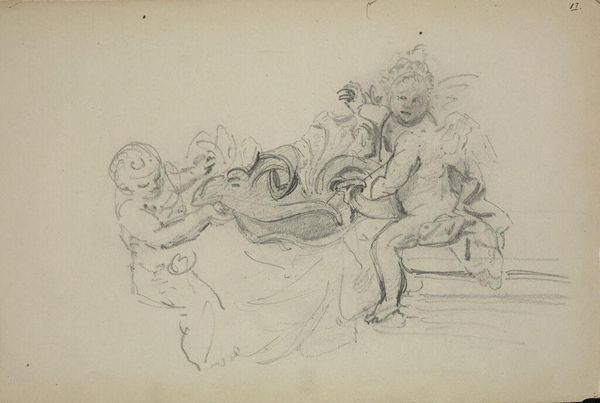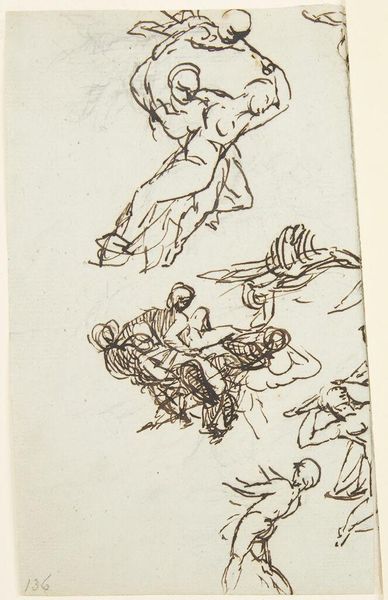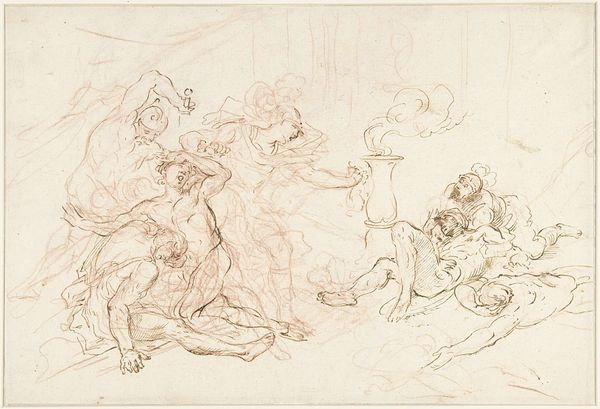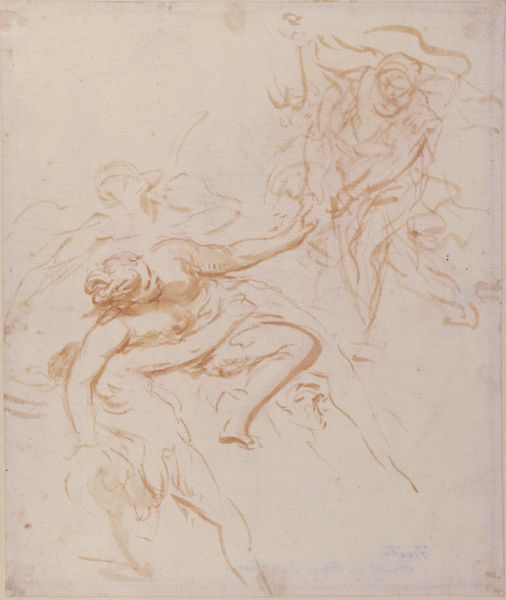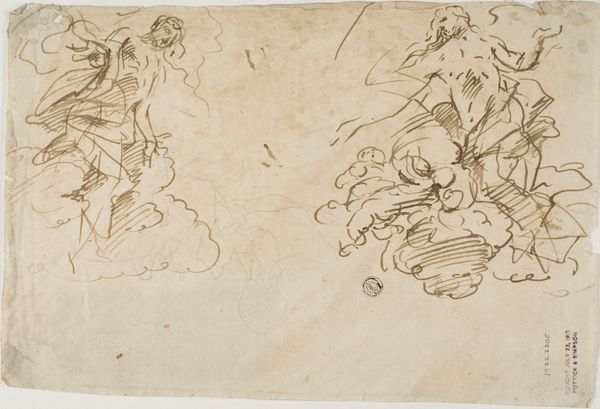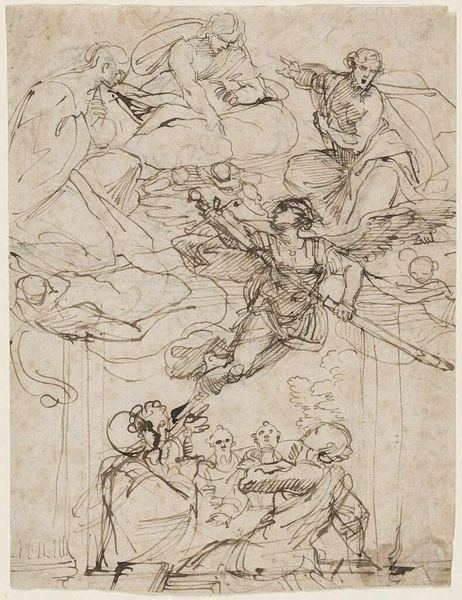
drawing, ink, pen
#
drawing
#
ink drawing
#
allegory
#
narrative-art
#
baroque
#
ink painting
#
pen sketch
#
figuration
#
ink
#
pen work
#
pen
#
grotesque
Copyright: Public Domain: Artvee
Curator: Guercino’s pen and ink drawing, "A Diablerie," thought to have been produced sometime between 1591 and 1666, presents quite the scene. Editor: My first impression is one of agitated energy, like a fever dream rendered in frantic lines. There’s a theatrical quality too, wouldn't you say? Curator: Absolutely. Baroque sensibilities leaned toward drama, and this drawing certainly delivers. But let's look closer at the materiality. Guercino wasn’t just sketching for pleasure; this piece would have been created for the marketplace, appealing to specific tastes and clientele with a flair for the grotesque and allegorical. Editor: And those grotesque figures, perched above what looks like the fiery pit of hell! The grotesque aesthetic itself often served specific social functions, representing anxieties about the instability of order or moral corruption. It's fascinating to consider what the elites consuming such images believed it said about themselves. Curator: Precisely! And how did this particular kind of imagery reinforce hierarchical structures and dominant cultural narratives? How did its exhibition space, if any, influence the response and the consumption of this artwork? Was the patronage influencing it? These elements are just as crucial to consider as the figures and scenes within. Editor: You are so right. Take for example, how it's consumed today—digitized and disseminated globally. What does that mean in relation to the message that the artist had? Curator: Yes, its contemporary life online certainly recontextualizes the image and, therefore, redefines the very terms by which the audience consumes the artwork. Now its availability redefines it. Editor: Thinking about it, that raw ink work – you can practically feel the artist's hand moving across the page. It invites speculation about the labor involved and its accessibility during its creation. It truly invites us to contemplate both the seen and the unseen aspects of its journey through history. Curator: Exactly, tracing that journey—both its historical reception and present consumption—adds such critical context. Editor: Indeed. "A Diablerie" invites a look past its pen strokes, prompting considerations of social power, the politics of display, and the long arc of cultural reception that makes each artwork so much more than what initially meets the eye.
Comments
No comments
Be the first to comment and join the conversation on the ultimate creative platform.

